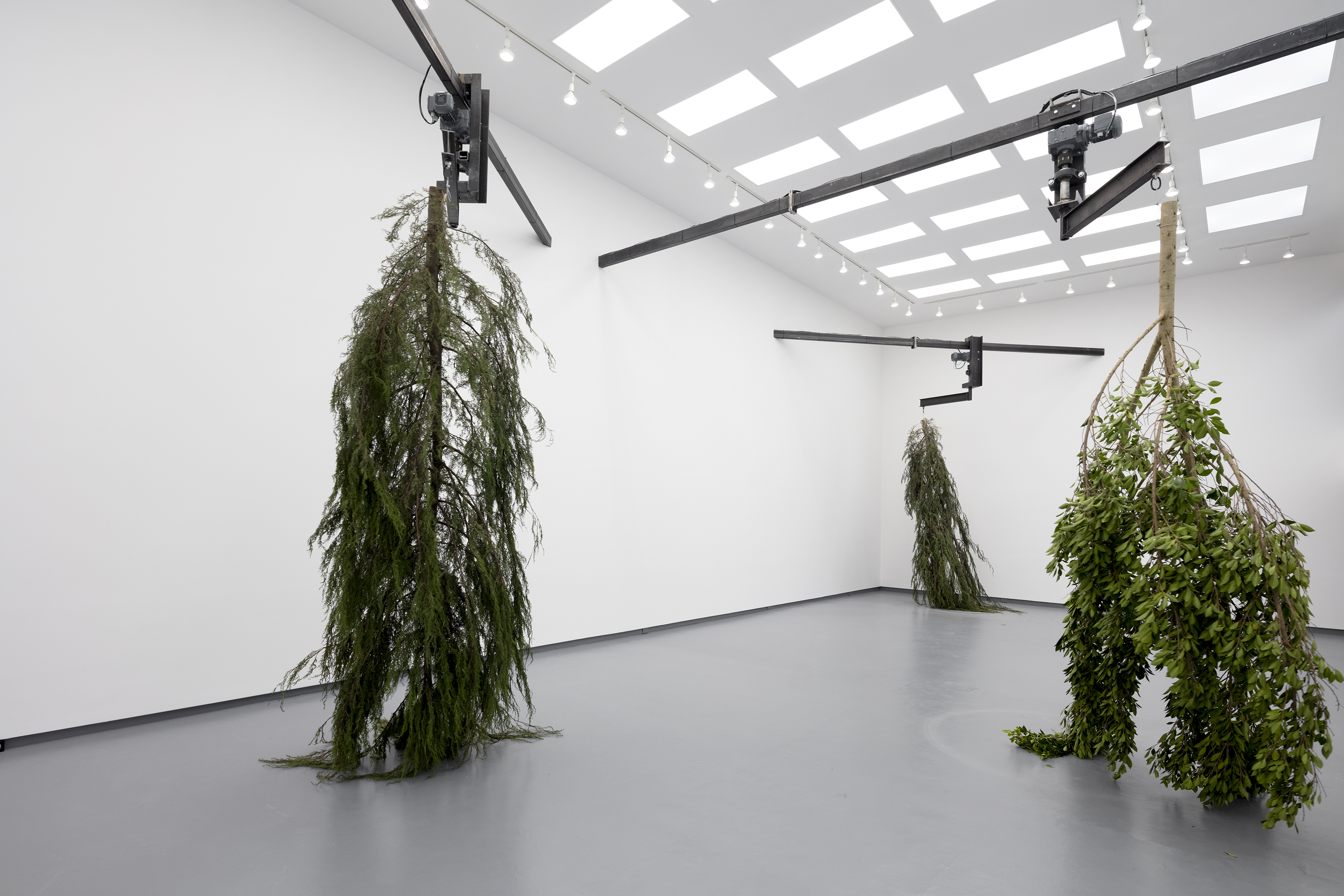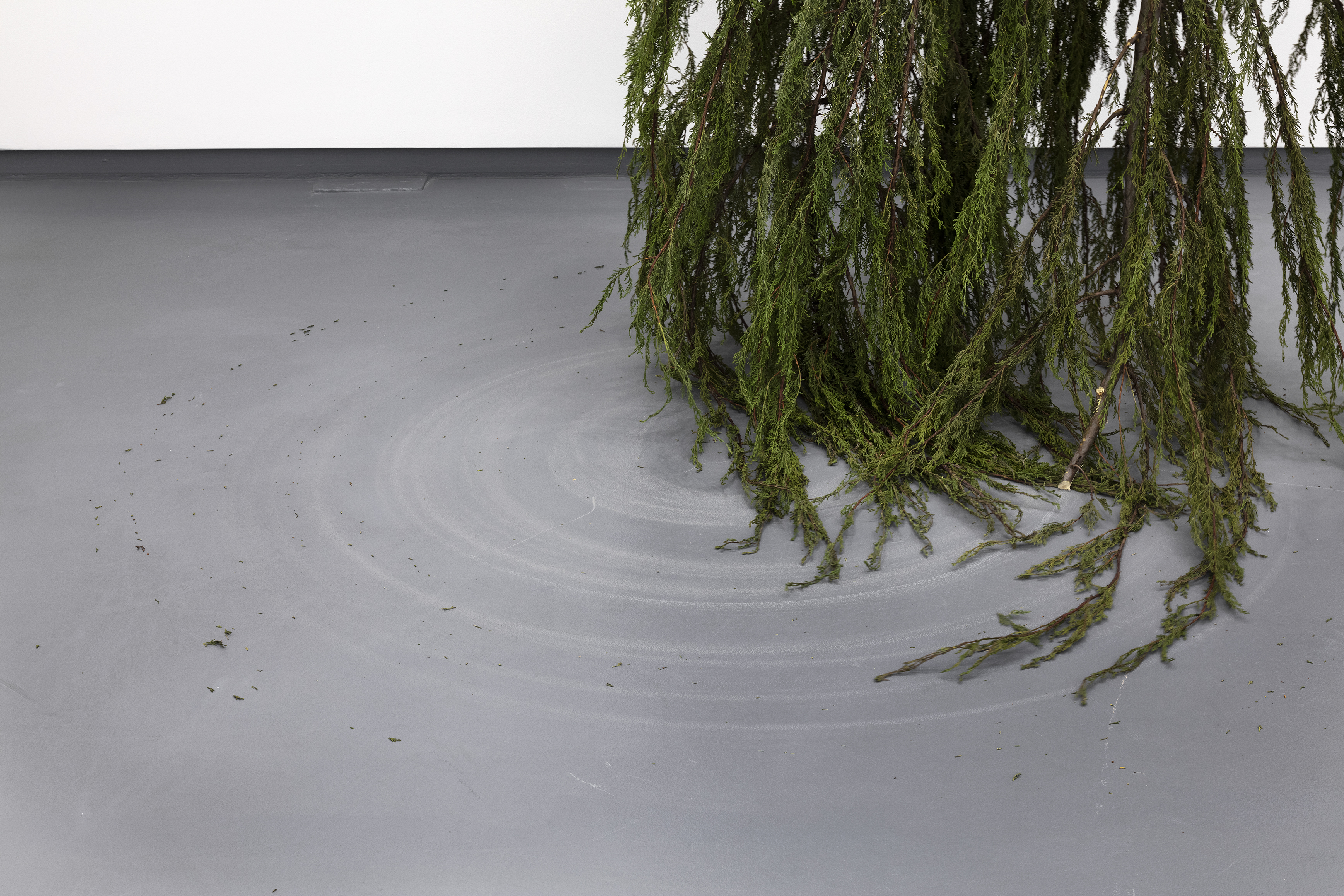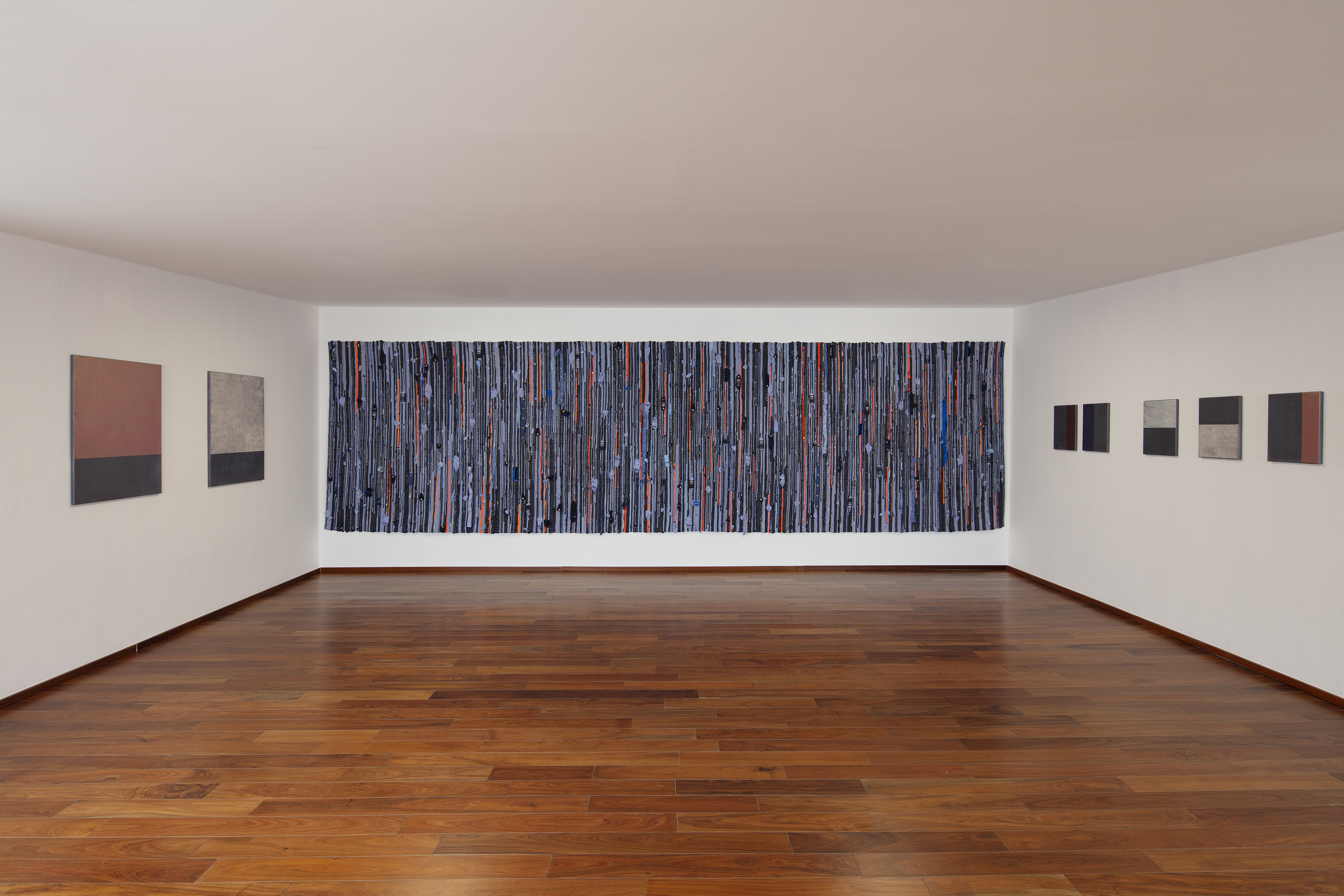Exhibition
Clearing
Projectos Monclova, Mexico City
07.02. - 01.04.2023
Metallically Connected Trees: À propos of Forst by Michael Sailstorfer
By María Antonia González Valerio
In this day and age, the theme of nature is an urgent concern. There is a generalized sense of devastation, of imminent crisis, of catastrophe. It feels as though we are facing the risk that life on the planet will cease to exist as we know it, that life’s mode of being will go extinct. We see nature as vulnerable, threatened. There are many different ways of responding to this emergency and this feeling, but a consensus is utterly lacking.
What place does nature occupy in our world? Between being a commodity, an instrument, an object of exchange, a raw material, a natural resource, a landscape, a park, an ecosystem, nature has ceased to be something immediate, something unquestioned, something we take for granted, assuming that it is simply there and that its power is too great to be affected by human beings. It has become something for which we have to create a place, to make room, to procure it and safeguard it both from humanity and from the imbalances that human activity generates on the planet.
Nature under threat: that is one of the inescapable themes of our time—or nature en route to extinction, because natural and living things have many more ways of being than what we are able to conceive or understand, than the one that frenetically worries us. Lo vivo—life in general, all living beings—can mean many things, and in that irreducible and even indescribable plurality, life opens up and extends far beyond our precarious networks of care. What is it that we see and describe from a given point? What matters to us, and since when?
We must consider the way in which trees appear as art: we must produce platforms of visibility and display there what (sometimes) interests us, what we will have to linger over (for a few fleeting moments). We must bring life to such a platform, but not from just anywhere, because it is no longer the life of the bucolic landscape, nor is it the life of luminous visual representation, nor the tree in the exuberant jungle, nor the tree in the lush forest. The platform of visibility produced by contemporary art makes it possible to question life from the standpoint of the nexuses in which it is given in these times. Life appears then in its fragility, in its materiality, in its death. An upside-down world in which dead trees whirl on their tops without dancing. They spin mechanically, a rotomotor determining how they move, wandering without any destination.
Here nature intertwines with technics, and technics is something from which there is no longer any escape. Here and now there is no nature that is given at the margin of technics. We thus have to understand it as permeated by various technologies, from information science to biotechnology to engineering; permeated by that which also threatens it. Trees linked metallically to the rotomotor that determines their movements, that turns them upside-down because they are dislocated in the installation, the gravity that makes them grow toward the sky and the spatiality that has informed the organism so that it grows vertically, thinly covered in raised points. There is neither up nor down: it as if order had dissipated, as if space appeared to be the result of our actions and dispositions.
Dry, dead trees losing their branches little by little, their needles scattered on the floor, where they turn into dust, disappearing.
This is not a forest. This is not a garden.
Nothing breathes here.
Here there are tree-machines that have no covenant with the other, that have no world, around which there are no birds, no lichen, no wind, no sky.
Uprooted, unearthed, placeless, neither here nor there, presented as art-objects; trees whose death calls out with the sound of a machine, voicing the questions that we most have to ask ourselves if we are to be capable of continuing to inhabit nature, if we are to know some day how to give nature a place—not as we contemplate it from the outside, from afar, in a dark forest, but rather as something that is part of our everyday lives, through which we move every day, and which we could never be without.
Now the simplest question can be asked: what is a tree? What?
And after that: what happens (to us) once the tree really occurs as an event?
For the first time, perhaps a tree appears. This tree. What is it? Where does it come from? Where will it go? Which forest did it belong to? Why is it here? And why am I here?
Forst is an invitation to dwell alongside trees.


